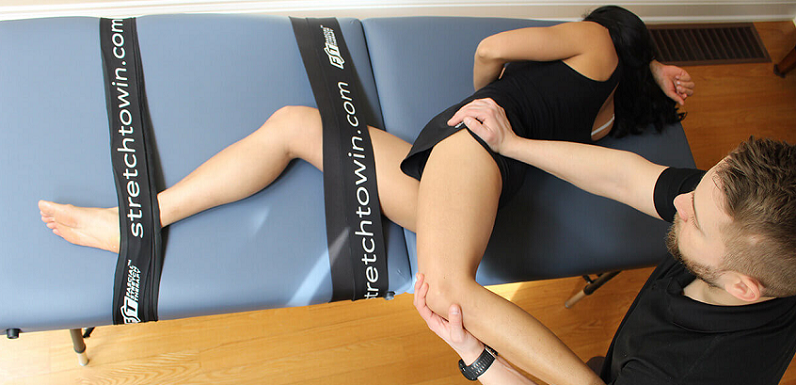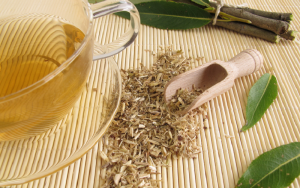
Fascia fitness is an often-overlooked aspect of physical health that holds the key to unlocking greater flexibility, mobility, and pain relief. Here we explore the fascinating science behind fascia and its crucial role in our body’s movement and recovery. By understanding the common issues related to fascia and incorporating targeted exercises and techniques into your routine, you can experience improved athletic performance, faster recovery from injuries, and a reduced risk of pain and inflammation.
Contents
Introduction to Fascia Fitness
Fascia is a continuous network of connective tissue that surrounds and connects all muscles, organs, and bones within the body. It is primarily composed of collagen and elastin fibers, which provide strength and flexibility. Fascia plays a crucial role in our overall health and well-being, as it helps to maintain the structural integrity of the body while also allowing for efficient and fluid movement.
The health and functionality of fascia can greatly impact our flexibility, mobility, and overall comfort. When fascia is healthy, it allows muscles to glide smoothly over one another, promoting a full range of motion and reducing the risk of injury. However, when fascia becomes tight, dehydrated, or restricted, it can lead to pain, stiffness, and a decreased range of motion.
Fascia fitness focuses on improving the health and function of this essential connective tissue, leading to increased flexibility, reduced pain, and enhanced athletic performance. By incorporating fascia-specific exercises and techniques into your routine, you can unlock the full potential of your body’s connective tissue and experience the benefits of optimal fascial health.
The Science Behind Fascia and Its Functions
To fully appreciate the importance of fascia fitness, it’s essential to understand the science behind fascia and its various functions in the body.
Fascia’s Role in Movement
Fascia is an integral part of our musculoskeletal system, providing support, stability, and flexibility. It enables the transmission of force between muscles, allowing for efficient movement and coordination [1]. Healthy fascia is both strong and elastic, allowing muscles to contract and lengthen smoothly without restriction.
When fascia is functioning properly, it helps to distribute the load evenly across muscles and joints, reducing the risk of injury and promoting optimal movement patterns. However, when fascia becomes tight or imbalanced, it can hinder movement, leading to compensations and inefficient movement patterns that can contribute to pain and injury.
Fascia’s Role in Injury and Recovery
In addition to its role in movement, fascia plays a critical part in injury recovery. When our body experiences an injury, the fascial system responds by forming scar tissue and adhesions to help stabilize and repair the affected area. While this is a necessary part of the healing process, excessive scar tissue can lead to fascial restrictions, limiting flexibility and mobility in the surrounding tissues.
Fascia fitness can help promote a healthy healing process by encouraging proper alignment of collagen fibers, reducing the formation of excessive scar tissue, and maintaining the elasticity of the fascial network.
Fascia’s Role in Pain Management
Fascia is rich in nerve endings, making it highly sensitive to pain and discomfort. When fascia becomes tight, dehydrated, or imbalanced, it can contribute to chronic pain and discomfort in various parts of the body. This is because restricted fascia can compress nerves, blood vessels, and other structures, leading to inflammation and pain [2].
By focusing on fascia fitness, you can improve the health and function of your fascial system, reducing the risk of pain and discomfort caused by fascial restrictions. This can ultimately lead to improved comfort and well-being, allowing you to move more freely and enjoy a greater quality of life.

Common Fascia-Related Issues
Several common issues can arise from unhealthy or imbalanced fascia. In this section, we’ll discuss some of the most prevalent fascia-related issues and how they can impact your overall health and well-being.
Fascial Adhesions
Fascial adhesions are areas where the fascia has become stuck together, often as a result of injury, inflammation, or inactivity. These adhesions can restrict movement and cause pain, as they prevent the fascia from gliding smoothly over the underlying muscles and tissues. Fascia fitness techniques, such as self-myofascial release and targeted stretching, can help to break up these adhesions and restore the natural elasticity of the fascia.
Fascial Dehydration
Fascia is composed of a network of collagen and elastin fibers, suspended in a gel-like matrix known as the extracellular matrix (ECM). The ECM is primarily made up of water, which helps to maintain the fascia’s elasticity and suppleness [3]. When the fascia becomes dehydrated, it can lose its flexibility and become more prone to stiffness and adhesions. Proper hydration and nutrition are essential for maintaining healthy fascia, and targeted fascia fitness exercises can also help to improve fascial hydration.
Restricted Range of Motion
A restricted range of motion can result from tight, dehydrated, or imbalanced fascia, which can hinder movement and lead to compensations in the body. When the fascia is unable to glide smoothly over the underlying muscles and tissues, it can limit the joint’s ability to move freely, leading to decreased flexibility and increased risk of injury.
By incorporating fascia fitness techniques into your routine, you can work to improve the health and elasticity of your fascial system, promoting a greater range of motion and reduced risk of injury.

Benefits of Fascia Fitness
By focusing on the health and function of your fascial system, you can experience a wide range of benefits that extend beyond just flexibility and pain relief.
Improved Flexibility
One of the primary benefits of fascia fitness is improved flexibility. By targeting fascial adhesions and restrictions through targeted stretching and myofascial release techniques, you can help to restore the natural elasticity of your fascia, leading to increased range of motion and flexibility. This can ultimately enhance your overall athletic performance and reduce your risk of injury.
Enhanced Mobility and Athletic Performance
A healthy fascial system is essential for optimal movement and athletic performance. By incorporating fascia fitness exercises into your routine, you can improve the efficiency and coordination of your movements, leading to enhanced mobility and athleticism. This can translate to improved performance in a wide range of sports and physical activities, as well as a reduced risk of injury.
Reduced Pain and Inflammation
Fascia fitness can help to alleviate pain and inflammation associated with tight or imbalanced fascia. By addressing fascial restrictions and promoting proper hydration and alignment of the fascial network, you can reduce the risk of nerve compression, inflammation, and discomfort associated with unhealthy fascia. This can lead to improved comfort and well-being, allowing you to move more freely and enjoy a greater quality of life.
Faster Recovery from Injuries
Fascia plays a crucial role in injury recovery, and by focusing on fascia fitness, you can help to promote a healthy healing process. Techniques such as self-myofascial release and targeted stretching can help to maintain the elasticity of the fascial network, reducing the formation of excessive scar tissue and promoting proper alignment of collagen fibers [4]. This can ultimately lead to faster recovery from injuries and improved overall function of the affected tissues.

Key Principles of Fascia Fitness
To effectively improve the health and function of your fascial system, it’s essential to understand the key principles of fascia fitness.
Hydration and Nutrition for Healthy Fascia
Maintaining proper hydration and nutrition is crucial for the health of your fascial system. As mentioned earlier, fascia is primarily composed of collagen and elastin fibers suspended in a gel-like matrix, which is primarily made up of water. Staying well-hydrated helps to maintain the elasticity and suppleness of your fascia, reducing the risk of stiffness and adhesions.
In addition to hydration, proper nutrition is essential for maintaining healthy fascia. Consuming a diet rich in anti-inflammatory foods, such as fruits, vegetables, lean proteins, and healthy fats, can help to support the overall health of your fascial system. Additionally, certain nutrients, such as vitamin C, can help to support the production of collagen and promote the health and function of your fascia.
Proper Stretching Techniques
Incorporating targeted stretching techniques into your routine can help to improve the elasticity and function of your fascia. It’s essential to use proper form and technique when stretching to ensure that you’re effectively targeting the fascial system and not just the muscles. Some effective stretching methods for fascia fitness include dynamic stretching, static stretching, and proprioceptive neuromuscular facilitation (PNF) stretching.
Myofascial Release Techniques
Myofascial release techniques are designed to help break up fascial adhesions and restrictions, improving the overall health and function of your fascial system. These techniques typically involve applying pressure to specific areas of the body using tools such as foam rollers, massage balls, and massage sticks. By incorporating myofascial release techniques into your fascia fitness routine, you can help to restore the natural elasticity of your fascia and alleviate pain and discomfort associated with tight or imbalanced fascia.
Fascia Fitness Exercises
To effectively improve your fascial health, it’s essential to incorporate a variety of fascia-specific exercises into your routine. In this section, we’ll discuss various self-myofascial release (SMR) tools and techniques, as well as stretching methods that can help you achieve optimal fascial fitness.
Self-Myofascial Release (SMR) Tools and Techniques
Self-myofascial release is a popular and effective method for addressing fascial adhesions and restrictions [5]. By applying pressure to specific areas of the body using various tools, you can help to break up adhesions, restore fascial elasticity, and alleviate pain and discomfort. Some popular SMR tools and techniques include:
Foam Rolling
Foam rolling is a versatile and accessible SMR technique that involves using a cylindrical foam roller to apply pressure to various areas of the body. By slowly rolling the targeted area over the foam roller, you can help to release tightness and improve fascial health. Foam rolling is particularly effective for addressing tightness in the legs, back, and hips.
Massage Balls
Massage balls, such as lacrosse balls or specially designed therapy balls, can be used to target smaller, more specific areas of the body that may be difficult to reach with a foam roller. By placing the massage ball on the targeted area and applying pressure, you can help to break up fascial adhesions and release tightness in the muscles and connective tissues.
The Stick
The Stick is a flexible, handheld massage tool that can be used to target tightness and adhesions in various areas of the body. By applying pressure to the targeted area using the Stick, you can help to improve fascial health and alleviate pain and discomfort.
Dynamic Stretching
Dynamic stretching involves moving the body through a range of motion to help improve flexibility and fascial health. This type of stretching can help to warm up the muscles and fascia, preparing them for physical activity and reducing the risk of injury. Examples of dynamic stretches include leg swings, arm circles, and walking lunges.
Static Stretching
Static stretching involves holding a stretch for an extended period, typically 15-30 seconds, to help improve flexibility and fascial health. This type of stretching is most effective when performed after a workout or physical activity when the muscles and fascia are warm and more receptive to stretching. Examples of static stretches include the hamstring stretch, quadriceps stretch, and calf stretch.
Proprioceptive Neuromuscular Facilitation (PNF) Stretching
PNF stretching is an advanced stretching technique that involves alternating between stretching and contracting the targeted muscle group. This method can help to improve flexibility and fascial health by promoting relaxation and lengthening of the muscles and connective tissues. PNF stretching should be performed with caution and under the guidance of a trained professional to ensure proper technique and prevent injury.
References
[1] How “Fit” Is Your Fascia?
[2] Fascial Fitness: Fascia oriented training for bodywork and movement therapies
[3] Fascia: The Tensional Network of the Human Body
[4] Fascial Fitness Fascia oriented training for bodywork and movement therapies
[5] The real science behind fascia ailments





